Mixed-breed dogs come in an endless variety of breed combinations. While there are still many dog owners who frown upon mixed breeds, others have a special attachment to dogs that combine the features and temperaments of multiple dogs.
However, few dogs can boast such a curious combination of breeds as the Border Collie-Maltese Mix.
What is a border-collie Maltese mix? The Border Collie-Maltese mixed-breed dog sometimes called a Border Colltese or Maltese Border Collie is a rare hybrid that combines the highly energetic nature of the Border Collie with the playful but inactive nature of the Maltese.
Understanding the Parent Breeds
As with most mixed breeds, it can be difficult to determine which characteristics of the parent breeds the offspring will inherit.
However, it will help to have a solid understanding of the parent breeds to give you some idea of what you can expect.
The Border Collie is a high-energy working breed with a reputation for high intelligence. Border Collies were first developed in Scotland and England as sheepdogs.
The word “collie” is actually Scottish and refers to a sheepdog. This breed was common along the borders of England, Scotland, and Wales, hence the name “Border Collie.”
The American Kennel Club recognized the Border Collie as part of the Herding Group in 1995 (source).
Border Collies are known for the intensity with which they approach everything they do.
They are noted for a particularly intense stare and their high responsiveness to their master’s cues.
While this makes them ideal herding dogs, this makes them less than ideal for more laid back owners. The UK Kennel Club recommends at least two hours of exercise a day for the Border Collie.
Border Collies are often referred to as workaholics since they can’t stand long periods of inactivity. If they are not given a task, they may begin to develop destructive behavior.
While Border Collies are still affectionate, they will not be very cuddly until they’ve discharged their working energy.
Adult Border Collies stand at somewhere between 18” to 20” at the shoulder. They are highly agile and muscular with either a rough or smooth coat.
In addition to their working roles, their agility and athleticism make them well-suited to dog show agility competitions.
The Miniature Border Collie
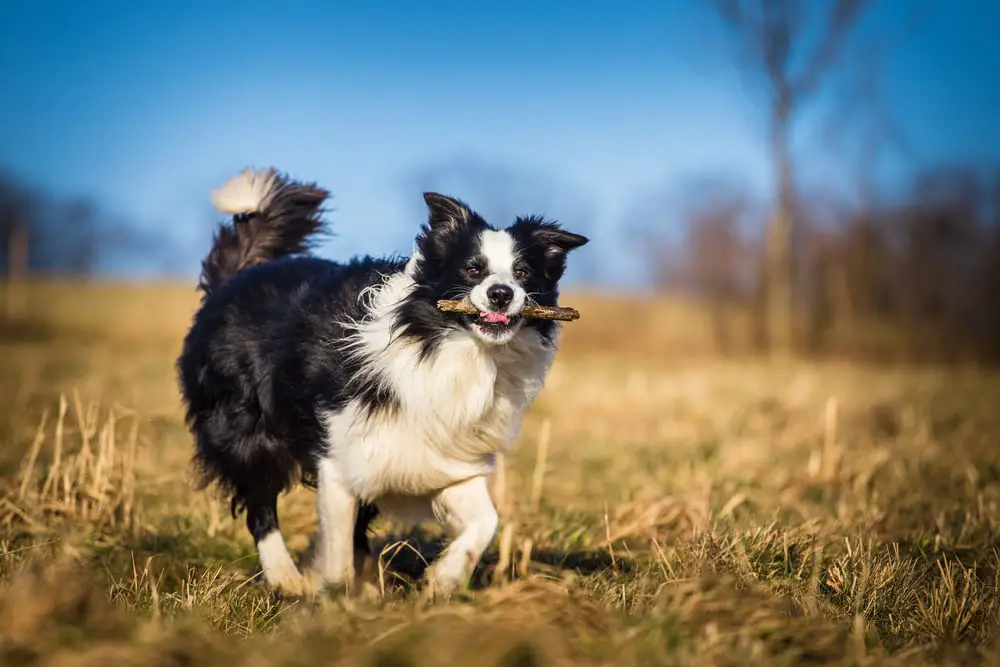
While it’s not an officially recognized breed, the Miniature Border Collie bears many of the traits of the original breed. These miniature breeds are often achieved by breeding dogs with the dwarfism gene or by repeatedly breeding runts.
Both methods can result in health problems. The most humane way to achieve a smaller dog from a larger breed is to crossbreed with a smaller dog, which is sometimes achieved through artificial insemination (source).
The Maltese

In stark contrast to the Border Collie, the Maltese are a toy breed that is more laid back, affectionate, and better suited to small homes and apartments.
The height of the Maltese is less than half of that of the Border Collie at 7” to 9”, and their weight at under 7 lbs is a mere fraction of that of the Border Collie at 30 to 55 lbs.
The personality and bearing of the Maltese are more aristocratic than that of the hard-working Border Collie since it is descended from the housepets of the aristocratic elites over millennia (source).
The Maltese originate from the Island of Malta off the coast of Sicily. The dog has been known since at least Greco-Roman times and was regarded as a status symbol from very early on.
The Maltese were introduced to England around AD 1300, probably through Norman ties in Sicily. Aristocratic ladies took a particular liking to them for their small stature.
They were first exhibited in America through the Westminster Kennel Club in 1877 and registered by the American Kennel Club in 1888 (source).
Despite their lack of size, Maltese are not lacking in confidence. They are as fearless as any breed as a guard dog and are known to be willful and stubborn at times.
If not properly disciplined, they have been known to bark incessantly. For this reason, they are actually among the most frequently abandoned pets.
The Maltese are completely covered with long white hair, which is often allowed to touch the ground but can be cut short.
The hair is silky smooth, with breed standards discouraging any wooliness, kinkiness, or curliness in its texture. Despite their long hair, they are very spritely and agile dogs.
Border Collie-Maltese Mix Behavior and Temperament
Breeding a Maltese with a Border Collie will likely result in a smaller breed dog, but this will not necessarily make them a suitable lap dog.
They will likely inherit the more hyperactive nature of the Border Collie, which will need more activity (source).
In order for them to stay mentally and physically healthy, they will need more frequent walks or some other form of activity like playing fetch or Frisbee (source).
Since Border Collies are accustomed to running all day alongside sheep, they will need plenty of space to get some of that running out of their system.
Remaining cooped up all day in an apartment is all but guaranteed to produce destructive behavior.
Still, the introduction of the Maltese breed’s milder, more affectionate, and laid back temperament might help offset this to some degree (source).
Both breeds are intelligent which will make them easier to train. However, a splash of Maltese stubbornness may make this a little more challenging.
Border Collie-Maltese Mix Appearance and Coat
When the solid white coat of the Maltese is combined with the standard Border Collie’s white coat with black markings, you’re going to end up with some variation of the black and white markings.
Other Border Collie coat colors include tan, bluish-grey, sable, slate, chocolate, and lilac which come in either bicolor or tricolor variety.
The length and texture of the coat can vary considerably. If a Border Colltese inherits the Border Collie medium coat, the dog will require more frequent grooming. Due to its single-layer coat, the Maltese does not shed like the Border Collie and is hypoallergenic.
A mixed-breed that inherits this trait will have reduced shedding. One downside to the Maltese coat is that the dog may be more prone to suffer from a number of skin issues like infections, infestations, and dandruff.
Training a Border Collie-Maltese mix
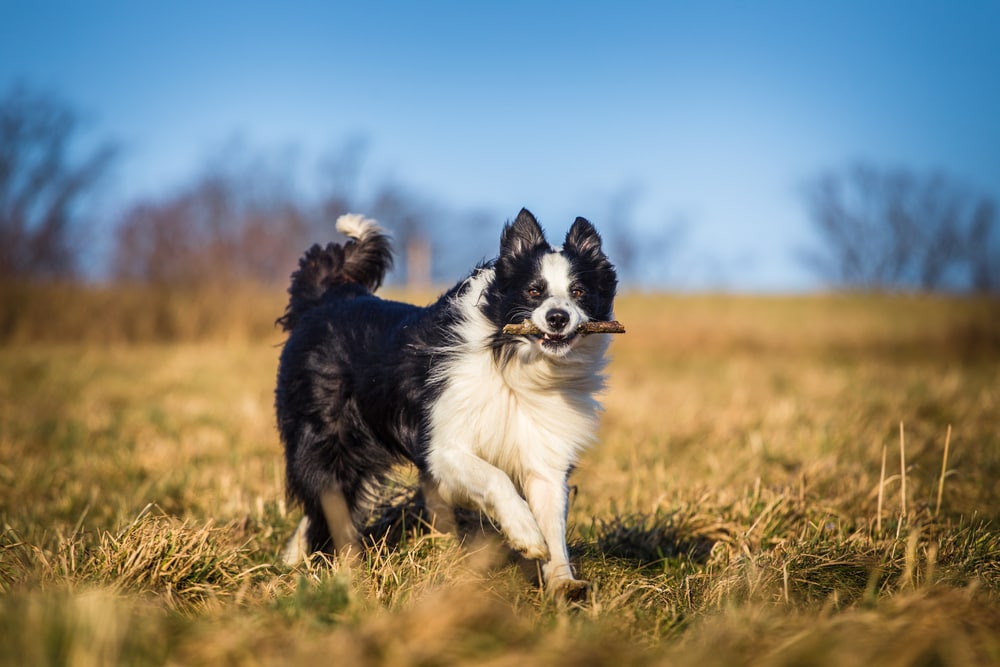
Your Maltese Border Collie puppy will inherit a high level of intelligence from both parents that will make them a very quick learner. You should begin obedience training at an early stage and seek guidance from a professional if this is your first dog.
Since a Border Collie mix will be so attentive to your every move, you want to make sure you’re sending the right signals (source).
For a guide on how much you should feed your dog per day, check out this article here.
Until the dog reaches adulthood, it will be hard to tell how much of the Border Collie’s temperament the dog has inherited. If they’ve inherited the Border Collie intelligence and work ethic, they will need to progress to more challenging work in order to keep them stimulated.
They can become downright neurotic without it or go through a bad chewing stage. Both the Maltese and the Border Collie are also known to bark out of separation anxiety or boredom.
Possible Health Risks
The Border Collie-Maltese mix may carry traits favoring one or the other of the parent breeds. How the mixed breed was obtained will also greatly affect the outcome.
For example, if a Maltese was mixed with a Miniature Border Collie, which is probably easier to achieve, there will be a greater chance that the dog will inherit some form of disease or defect.
While designer hybrids like the Maltese Border Collie offset some of the genetic health risks in some areas, certain health risks are increased if both dogs are prone to a specific disease.
Possible Health Risks Associated with the Maltese
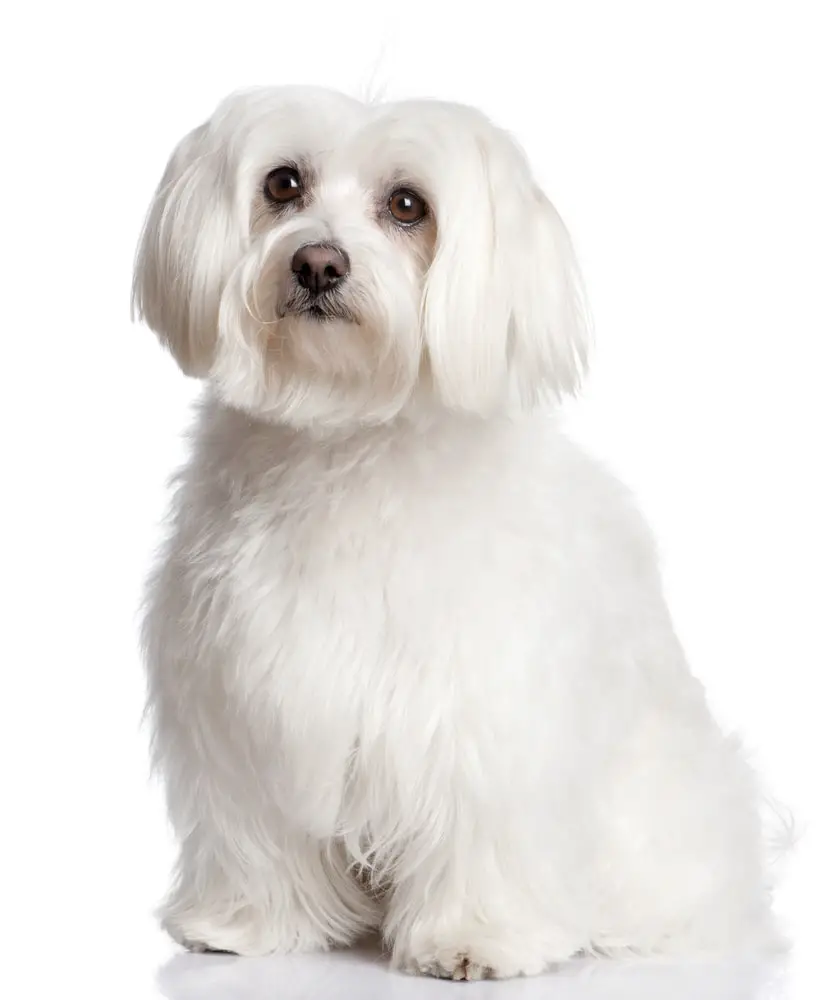
Toy breeds have a well-earned reputation for health problems, and the Maltese breed has a long list of possible health issues compared to the Border Collie.
However, for a toy breed, the Maltese is a fairly healthy breed.
Hydrocephalus
Toy breeds are particularly prone to Hydrocephalus, a neurological disorder caused by an excess of cerebrospinal fluid on the brain. This can cause a variety of problems depending on the area of the brain most affected.
Hydrocephalus can cause blindness, poor vision, a loss of hearing, poor motor skills, and seizures among other issues. The dog will require regular veterinary care and may have to be placed on medication or require surgery (source).
White Dog Shaker Syndrome
White Dog Shaker Syndrome is an idiopathic disorder (meaning its origin is uncertain) found almost exclusively in dogs with all-white coats. The cerebellum portion of the brain becomes inflamed resulting in full-body tremors (source).
Aberrant cilia
Aberrant Cilia is a condition in which the dog’s eyelashes grow more than usual. This can cause problems if the hairs touch the eyes.
Breathing Issues
The Maltese can also suffer from a variety of breathing issues including allergies, asthma, and even a collapsed trachea.
A collapsed trachea occurs due to a genetic weakness of the cartilage around the dog’s windpipe.
Colon Issues
Colitis is a swelling and inflammation of the colon. Clear indicators of colitis include diarrhea and blood in the stool. This condition can occur temporarily and can sometimes clear up on its own.
However, if the condition persists over a long period of time, you can consult with your vet to see what treatment options are available.
Heart Issues
In older dogs, heart murmurs and congestive heart failure can occur. Low-level heart murmurs are not a major concern, but higher-level murmurs can lead to congestive heart failure.
These murmurs will have to be detected during visits to your vet who may prescribe a lower sodium diet to reduce your dog’s blood pressure.
Liver Issues
Liver shunts affect the flow of blood to the dog’s liver. These lead to an increase of unfiltered metabolic waste in the dog’s system.
Symptoms will be visible in more severe cases such as weakness, constipation or diarrhea, increased urination, increased thirst, or seizures.
Here’s some additional health concerns related to Maltese:
Possible Health Risks Associated with the Border Collie
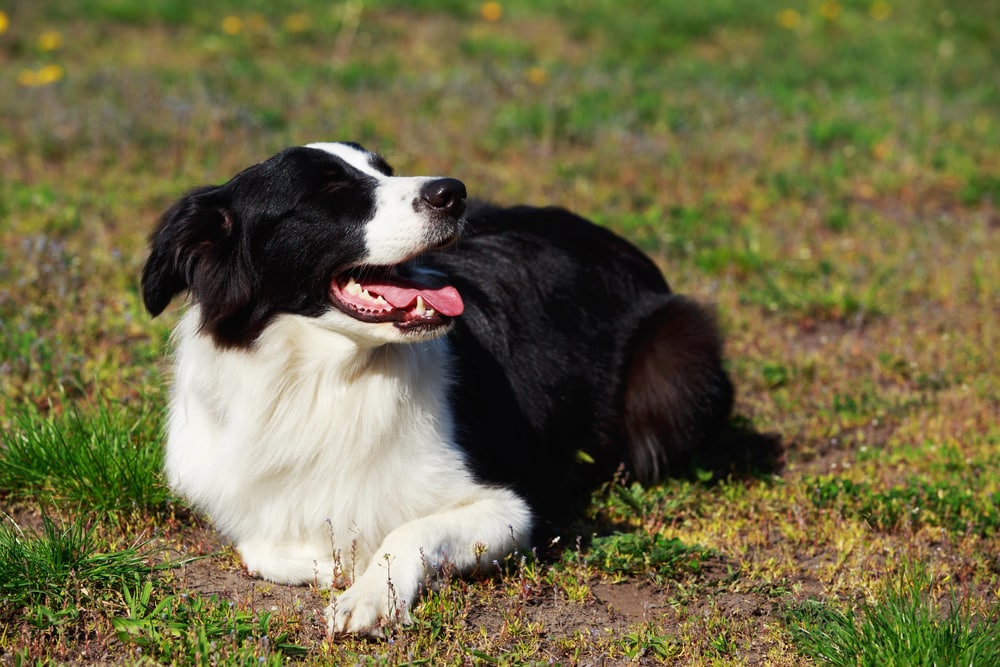
Compared to the toy breeds like the Maltese, Border Collies suffer from a much smaller array of diseases.
Epilepsy
Border Collies are particularly prone to canine epilepsy, especially Idiopathic Epilepsy (source). Epilepsy is the result of unusual neurological activity, while idiopathic epilepsy is so named because we don’t know the cause of the seizures.
Visual Problems
Some Border Collies may suffer from visual impairments in the form of Progressive Retinal Atrophy or Collie Eye Anomaly.
Progressive Retinal Atrophy is a degenerative condition that can eventually result in total blindness.
A dog may be a carrier for the mutated chromosome that causes Collie Eye Anomaly (CEA) but never show any symptoms.
When they do, these can include “cloudy eyes, sunken eyeballs, microphthalmia (small eyeballs), and eventual blindness”.
Other Issues
Hypothyroidism can occur in the Border Collie, producing lethargy, weight gain, or hair loss. Osteochondritis Dissecans is a deterioration of the cartilage around the joints of the dog.
Collies are not as likely to have this disease as larger breeds. The disease can be inherited, or it can be caused by diet, hormonal imbalance, or joint trauma.
Common Health Risks for Both Breeds
Patent Ductus Arteriosus
Border Collies are prone to develop Patent Ductus Arteriosus, a heart disease that is caused when certain arteries that are supposed to open instead remain closed.
The resulting imbalance of blood flow in the heart can lead to overload and heart failure (source). It is also common in toy breeds like the Maltese, so a Border Collie-Maltese mix has a higher chance of inheriting this disease from one or both parents.
Hip Dysplasia
Hip Dysplasia is a very common skeletal disorder in dogs that can result from both genetic and environmental factors.
The leg joint where the ball and socket meet are deformed so that the bones wear on one another over time. This is most common in larger dogs and is less common in medium and smaller breeds.
What is the Best Border Collie mix?
In addition to the Border Collie-Maltese mix, there are a number of designer breeds that are increasing in popularity. Unlike mutts, designer breeds are specifically bred between purebreds of known ancestry.
Mixing two breeds together has the advantage of a phenomenon known as hybrid vigor, which dilutes or avoids certain inherited health risks in purebreds.
Which one is best for you will depend on whether you’re looking for something with the traits of a retriever, hound, house dog, or herding dog.
Border Collie and Retriever Mixes
The Golden Retriever is among the most popular dogs in America, and there is a Golden Retriever-Border Collie Mix. The Golden Retriever mixture helps to create a more family-friendly dog that still requires a lot of activity.
The Labrador Retriever remains the most popular dog in America. The friendly nature of the Labrador will help offset some of the Border Collie’s less settled tendencies in a Border Collie-Labrador Mix.
Border Collie Mixes with Hounds
Dachshunds and Beagles are both known for their sense of smell and ability to track. Dachshunds are prone to health problems and should be checked out before breeding. Beagles are very friendly but are known for barking.
Border Collie Mixes with Lapdogs
The Border Collie-Poodle Mix, or the Bordoodle, makes for a highly intelligent animal with more energy than your typical lapdog. Like the Maltese mix, these dogs will shed more and the amount of grooming required will vary.
As with other toy breeds, the poodle genes will bring along a laundry list of possible health risks.
The Border Collie Pomeranian Mix will be very small compared to the other breeds, but they are still highly active.
Both the Border Collie and the Pomeranian have double coats with a soft undercoat. While their topcoat may carry Border Collie traits, it may also be shiny like that of the Pomeranian.
Border Collie Mixes with other Herding Dogs
When the Border Collie is bred with other highly intelligent working breeds like the Australian Shepherd or the German Shepherd, the result could prove a bit too much for an inexperienced owner.
German Shepherds are actually easier to train than Border Collies since the latter was accustomed to roaming freely and independently.
Blue Heelers are Australian cattle herding dogs, and a Border Collie-Blue Heeler mix will produce a dog with exceptionally high energy.
Related Content: Border Collie Ears: The Complete Guide, identify it properly as it comes in different size and shape!
Final Thoughts
The Border Collie-Maltese mix dog is one of the most curious blends of two very different breeds imaginable.
The purposes for which these dogs were bred are polar opposites of one another. The Maltese were favored as an aristocratic status symbol, whereas the Border Collie was bred for high energy and hard work.
If you’re a dog owner or prospective dog owner that’s looking for a small, playful, and energetic animal with high intelligence, the Border Collie-Maltese mix may be just right for you.
If you are looking primarily for a lapdog, any form of Border Collie mix will not be well-suited to that end. Make sure that you have the time and space to help these dogs lead a happy and healthy life.

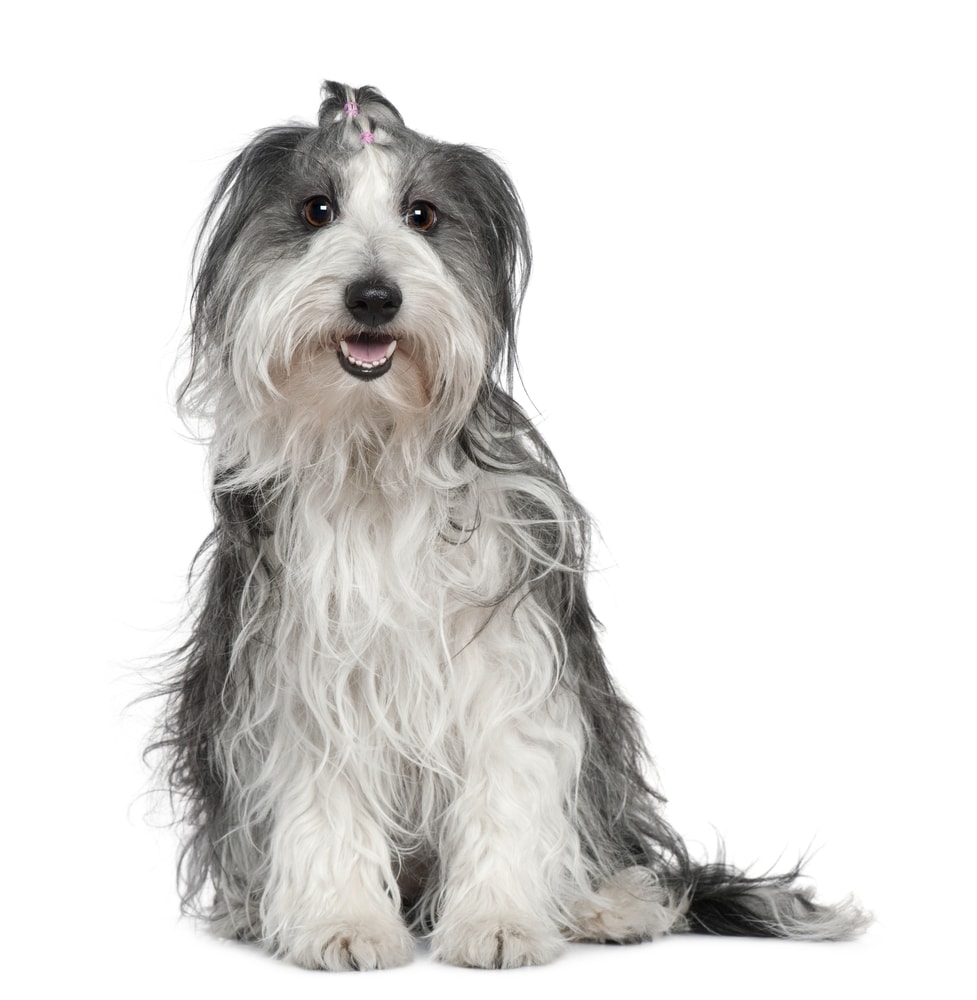
0 Comments